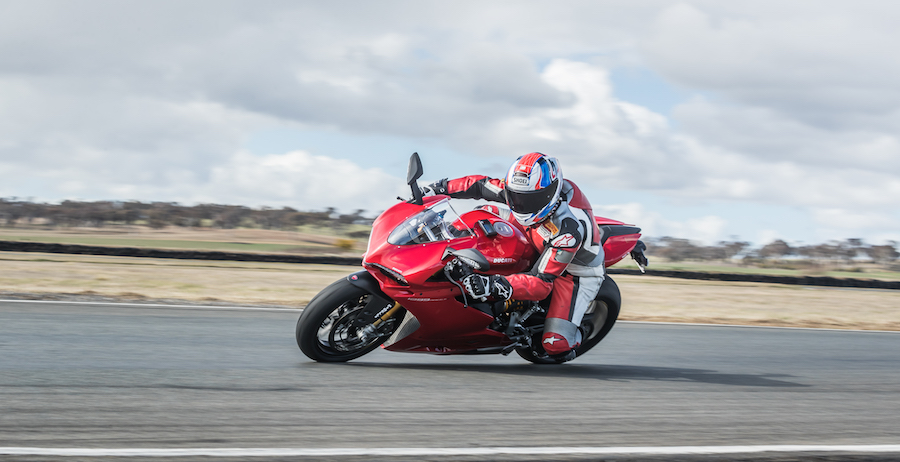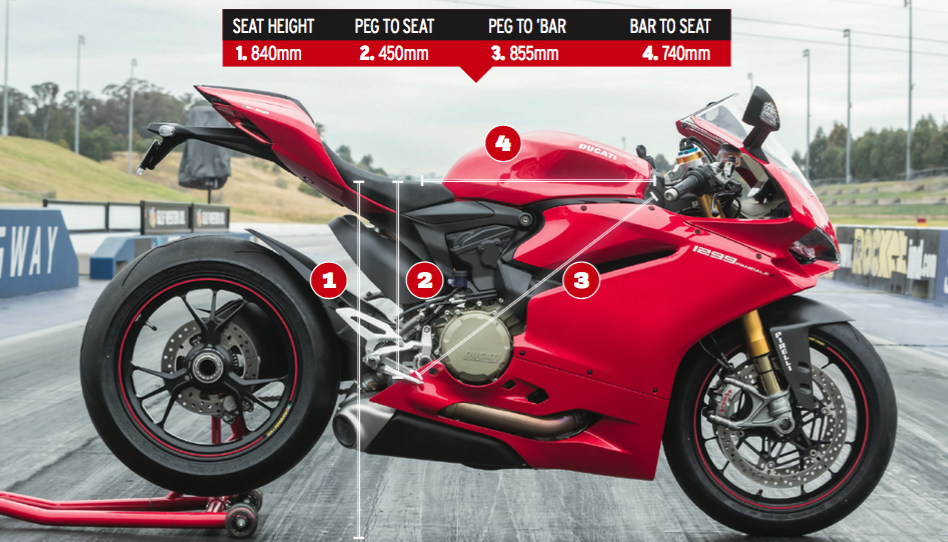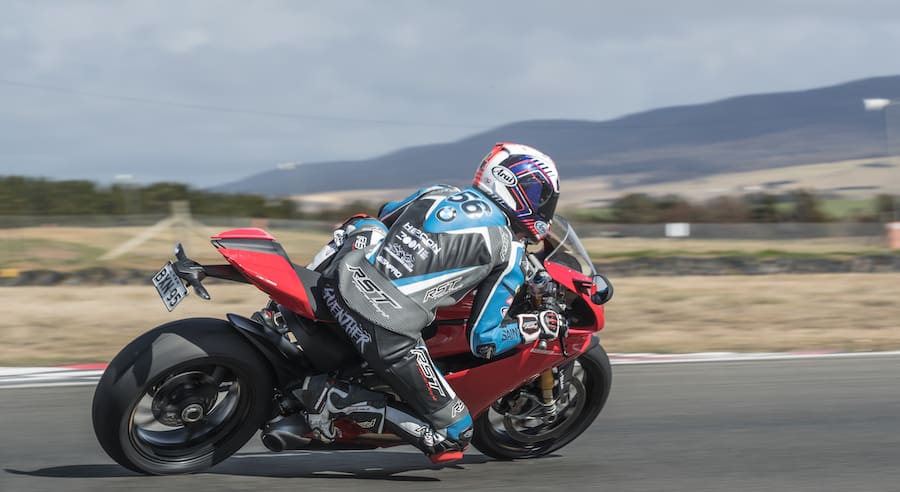In some ways, it will be sad to see the end of Ducati’s v-twin superbike era
AMCN has just received its invite to the world launch of the new Ducati Panigale V4 to be held at Valencia, Spain. To prepare for the launch of the eagerly anticipated Italian superbike, we thought it only fitting we take the outgoing v-twin for one last hurrah.
In some ways, it will be sad to see the end of Ducati’s v-twin superbike era. The 1299S may not have won this year’s AUSTest but it certainly won a few extra fans. This is what the test team had to say about the bike.
As the most expensive superbike of the bunch, Ducati’s Panigale S has a lot of work to do to justify its price tag. Ducati has always had a history of drawing non-biker’s attention, and that’s part of the allure of owning one. The Ducati is instantly recognisable, yes, but there is also something about riding the thumping V-twin that sends endorphins running and causes goosebumps to rise every time that throttle is twisted, creating a special vibe that only a machine of this calibre has.
The Panigale has been in production since 2011 and has received major improvements over the years. It increased in capacity to its current 1285cc in 2015, making it a real torque monster and adding a lot of excitement to an already glowing package.

The Ducati is the most technically different to the other AUSTest bikes in many ways. It’s the only V-twin, it’s the only bike without an alloy spar frame, and it boasts some pretty special features to boot. Its highly developed 90º powerplant has a vacuum pump to reduce pressure inside the engine for more revs and power. It’s got semi-active suspension and the same NIX30 fork and TTX36 shock as the Honda, but the shock is mounted on the left of the bike where ride height can be changed in an instant and even the rear link ratio is adjustable – something not possible on the others.

This year’s S was the lightest bike on test and that showed on the racetrack, where the deceptive Ducati let the rider get every ounce of power to the ground. It wasn’t too shabby at the drag strip either, putting in sub-10 runs and finishing third fastest for the day. The race-oriented electronics package worked perfectly with a smooth throttle and no unnecessary intervention, putting it ahead of the Japanese manufacturers.

The Panigale S is a bike with two personalities. Heading down the main street at 50km/h it feels like a thoroughbred racehorse straining to hold its composure – there’s a lot of power under that fairing waiting to break loose. The strange part is the way it can turn itself from animal to pussycat when you do get serious. It feels slow but it’s not; the Panigale knows when to show and when to go.
We found the Ducati needs to make an arc to work when cornering, and it wouldn’t change line like the fours. The arc system allowed so much corner speed though and it was just a matter of getting your head around the intricacies of the Panigale to let it reach its potential.
It’s a bike that needs a riding style to make it work, but if you crack it, it’s as fast as anything.

Three things
- Info on the TFT dash includes engine mode, TC, wheelie control, engine braking and ABS settings
- Side-mounted rear shock is a blessing for racers who want to make a quick adjustment
- The sidestand on the Panigale tucks in well, but it’s difficult to put down unless you actually get off the bike first
Second Ops
Aidan Hayes
The Ducati was nothing like I expected it to be. I felt confident on the track, the drag strip, and on the road. When accelerating or cornering this bike is so stable – it holds a line well but will run wide if your line is wrong as it is a little harder to change course mid-turn. I think it’s a bike you need to spend time with to get the most out of. The sidestand is tucked up well out of the way so no chance of scrubbing it out on maximum lean angle, but it needs a knob so you can find it.

Harley from RB Racing says…
At near on 1300cc, the Ducati makes the most power of all the bikes tested. There is a drop in torque at 5000rpm, and below 3000rpm it gets a bit hard to manage because it really just wants to rev, but beyond there it builds power at an amazing rate, all the way to the limiter. The massively oversquare engine makes the Ducati feel properly angry, while the transmission feels almost Japanese, with none of the clunkiness often associated with European twins.
On our dyno Power 138.86kW Torque 133.03Nm


Price
$35,490
Power
138.86kW Torque
133.03Nm
